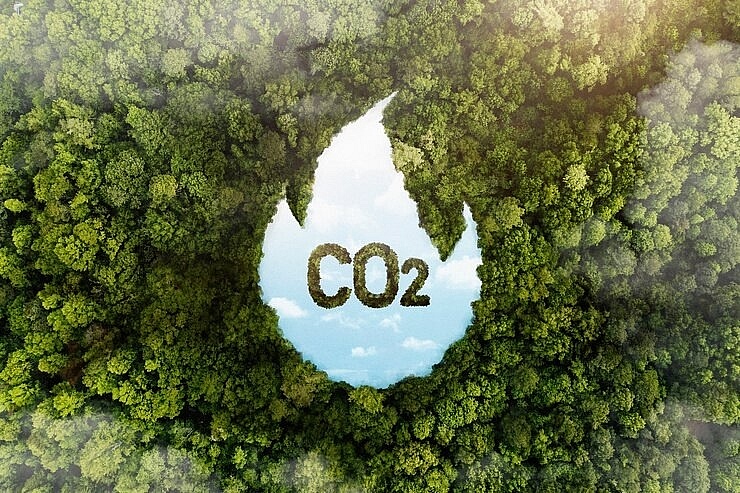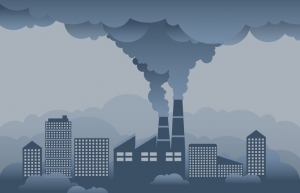Suggestions pour in for carbon credit development
At a seminar on the carbon credit market held last week in Ho Chi Minh City, experts emphasised the urgent need to complete the legal system to ensure the sustainable development of the carbon credit market in Vietnam.
 |
| Suggestions pour in for carbon credit development, illustration photo/ Source: freepik.com |
Professor Vo Xuan Vinh, director of the Business Research Institute at the University of Economics Ho Chi Minh City, highlighted that Vietnam has just over 1,900 facilities currently conducting greenhouse gas (GHG) emissions inventories, as mandated by regulations, marking them as potential players in the carbon credit market.
Additionally, Vietnam boasts 276 projects with nearly 30 million carbon credits certified under the Clean Development Mechanism. “To date, more than 300 programmes and projects have engaged in voluntary carbon credit transactions,” Vinh noted.
He also believed that Vietnam’s 14 million hectares of forests offer substantial potential for generating carbon credits through forest protection and restoration projects.
“Vietnam could sell 57 million carbon credits to international organisations, potentially earning hundreds of millions of USD annually, with current carbon credit prices around $5 per credit. But how will this revenue be allocated? Will it go to the forest growers, the government, or be divided in some proportion?” Vinh queried.
He noted that, according to Article 139 of the Law on Environmental Protection, the government encourages participation in the carbon credit market and has established regulations regarding the responsibilities and benefits of the parties involved. “But the law does not yet specify the exact income distribution ratios from carbon credit sales. Therefore, the income will be determined based on contractual agreements between the involved parties,” he said.
“Investing in green technology and renewable energy helps reduce long-term costs and enhances operational efficiency and compliance with stricter emission regulations.”
Meanwhile, Cao Tung Son, head of Meteorology, Hydrology, and Climate Change at the Department of Natural Resources and Environment of Ho Chi Minh City, pointed out that the city boasts many advantages for implementing climate change mitigation projects to generate carbon credits.
These include utilising public building rooftops for energy savings and renewable energy production, reducing emissions, and transitioning to electric motorbikes.
“The government should issue detailed regulations on the operational mechanisms of the market, including the processes for creating, certifying, and trading carbon credits. This would provide businesses and citizens with specific guidelines to comply with and effectively participate in the market,” he said.
Son suggested that businesses can purchase carbon credits to offset emissions that exceed their quotas.
Nevertheless, he also cautioned that such transactions must comply with transparency and disclosure regulations to prevent misuse, ensuring that the purchase of credits does not lead to unchecked emissions.
“Currently, carbon credits sold on the international market often fetch higher prices than those in the domestic market. However, the procedures for selecting international exchanges for listing credits and the regulations for selecting international carbon credit certifying agencies remain undefined,” he said. “Our department is urging the Ministry of Natural Resources and Environment to provide guidance on these matters.”
From a legal perspective, Dr. Vo Trung Tin, head of the Department of Land and Environmental Law at the Faculty of Commercial Law, University of Law Ho Chi Minh City, emphasised the necessity of establishing a comprehensive procedure for implementing carbon credit projects.
“There is a need to amend Decree No.06/2022/ND-CP to include specific regulations for carbon credit projects,” he asserted.
Tin explained that a carbon credit project under the UN Framework Convention on Climate Change must follow essential steps such as registering the project idea and methodology, project registration, project implementation reporting, validation, and carbon credit issuance.
“Regarding the competent authority, the government could assign various ministries to manage the recognition of methodologies, approve project ideas and projects, and issue carbon credits. This should align with the responsibilities of these ministries in implementing the monitoring, reporting, and verification system at the sectoral and facility levels,” he said.
Lawyer Le Duy Khang from Tin & Tam Law Firm warned that the government needs to research and promptly issue cohesive regulations.
“The carbon credit trading platform is expected to start operations in 2025 and become fully functional by 2028. Any delays could result in significant revenue losses and create accounting challenges for businesses dealing with this new asset class. The government needs to establish domestic carbon credit exchanges, creating a transparent and efficient platform for trading,” Khang said.
During the seminar last week, it was emphasised that fostering participation from financial institutions and investment funds in the market is essential to increase liquidity and diversify the types of carbon credits available for trading.
“Particularly, the government should encourage investments in green technology and emission reduction projects through financial support policies and tax incentives,” shared Dr. Le Hoang The, director of the Global Carbon Credit Training Center. “The completion of the legal framework for the carbon credit market not only facilitates business participation but also ensures the market’s transparency and efficiency.”
 | Carbon capture must quadruple by 2050 to meet climate targets: report By 2050, humanity must durably remove four times as much CO2 from the air as today to cap global warming below the crucial target of two degrees Celsius, researchers said Tuesday. |
 | Revealing the truth about the carbon credit market Carbon credits have recently made headlines in Vietnam, with the concept often surrounded by overblown expectations of an easy option, or suspicions of what feel unlikely attempts to cancel out greenhouse gas emissions. |
What the stars mean:
★ Poor ★ ★ Promising ★★★ Good ★★★★ Very good ★★★★★ Exceptional
Related Contents
Latest News
More News
- Honda launches electric two-wheeler, expands charging infrastructure (January 12, 2026 | 14:00)
- Vietnam striving to ease air pollution (January 09, 2026 | 14:41)
- Petrovietnam Gas awards first multi‑year LNG deal to Shell (January 09, 2026 | 14:38)
- Advancing the net-zero journey: Carlsberg Vietnam’s sustainability progress in 2025 (January 09, 2026 | 09:49)
- The green hydrogen and ammonia future for Vietnam (January 06, 2026 | 15:03)
- Green transition to close $20 billion annual investment gap (December 31, 2025 | 11:59)
- Australia contributing to Vietnam’s climate change responses (December 30, 2025 | 11:37)
- CME Solar strengthens position in Vietnamese renewables (December 30, 2025 | 11:21)
- Self-care signals shift towards sustainable healthcare (December 30, 2025 | 10:12)
- GreenYellow marks five years of clean energy growth in Vietnam (December 26, 2025 | 15:51)

 Tag:
Tag:





















 Mobile Version
Mobile Version